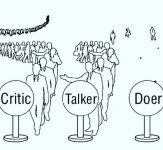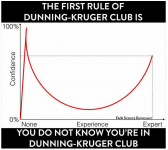Thanks so much for the great info! I agree this may turn out to be a brilliant move by Zeiss, the way the Conquest HD absolutely flipped the $1K "mid priced" market on its head. With Swaro discontinuing the SLC, there's a distinct price gap between the $1K sub-alphas and the now-well-over-$2500 top dogs, and Zeiss may have deftly swooped in and be poised to sell a bunch of these. How many people are going to walk into a shop, balk at the $3K sticker price of the NL or SF, and then grab the SFL and say "this is smaller, lighter, nearly as good optically, and over $1000 cheaper!"
With respect to "sharpness" and "contrast".... these terms are often ambiguous, but I think to some extent what you are talking about when discussing the level of perceived detail is not "contrast" per se (generally defined as the ratio between the brightest whites and the blackest blacks), but rather what we often refer to here as "microcontrast" (the perception of very finely resolved detail). And your perception of the SFL being super sharp, even to the point that you describe is being "so high resolving that the small details felt a bit jittery", is IMO roughly the same phenomenon Tobias Mennle sometimes mentions in his reviews (somewhat pejoratively) as a binocular looking "artificially or digitally sharpened".
For example in his 8x42 EDG review Tobias notes that "some glasses are too sharp which makes the images look a bit digital and artificial". And in the Noctovid review he says, "This is a brutally sharp glass. Too sharp even for my eyes. Sharpness is easy to achieve, and it generally wows people, and counteracts deficiencies of the images. The Nikon EDG and the Ultravids for me give a more natural sharpness." I've noticed this myself when comparing Zeiss vs Leica UV or Nikon EDG, where on the Zeiss it gives the impression of a more detailed almost "etched" look to fine lines and edges.
Now obviously whether this "etched / super sharp" phenomenon is a positive or negative is up to the individual, for Tobias it's too much and feels "artificial" but clearly for others it is a good thing and makes the binocular feel sharper in a pleasing way. I'm not passing judgement on it. But I think it's a real perceptual phenomenon, and I bet that if you did an objective resolution test the difference would not be nearly as great as your subjective perception of such.








